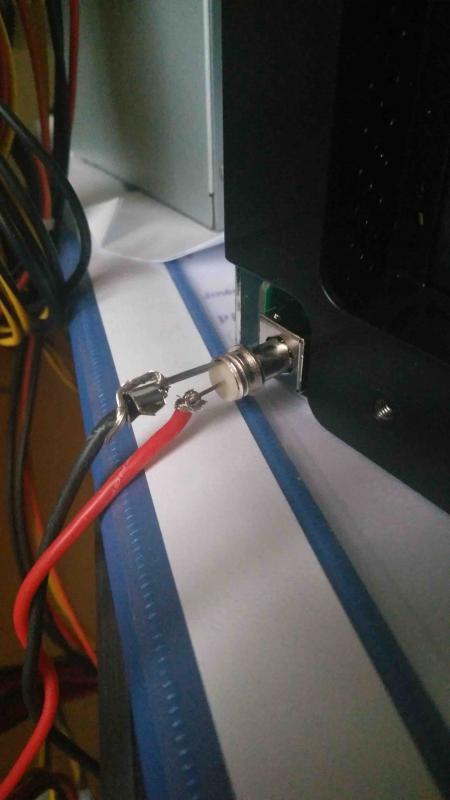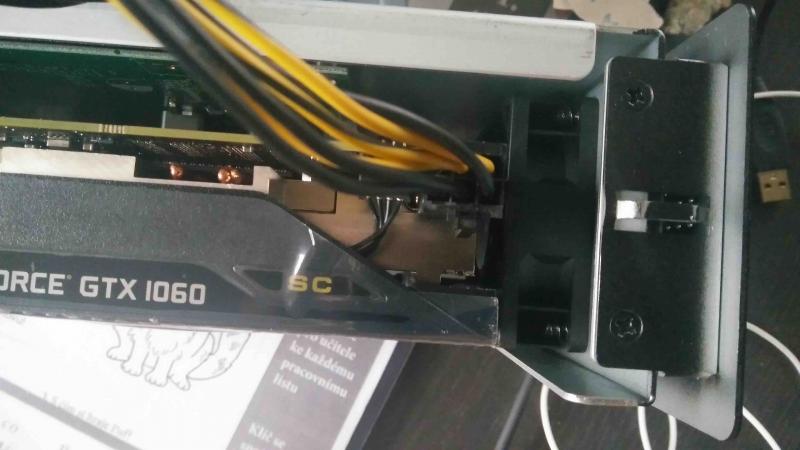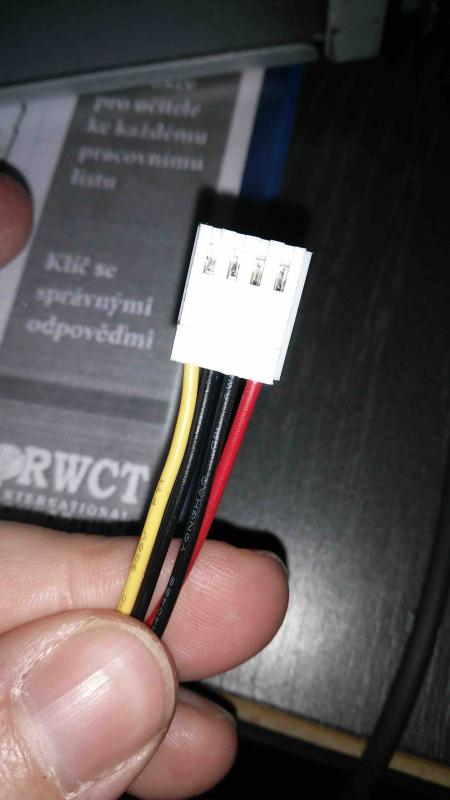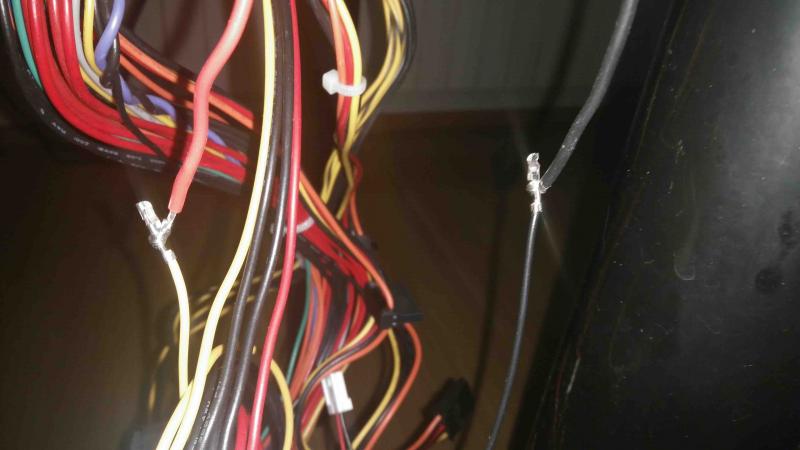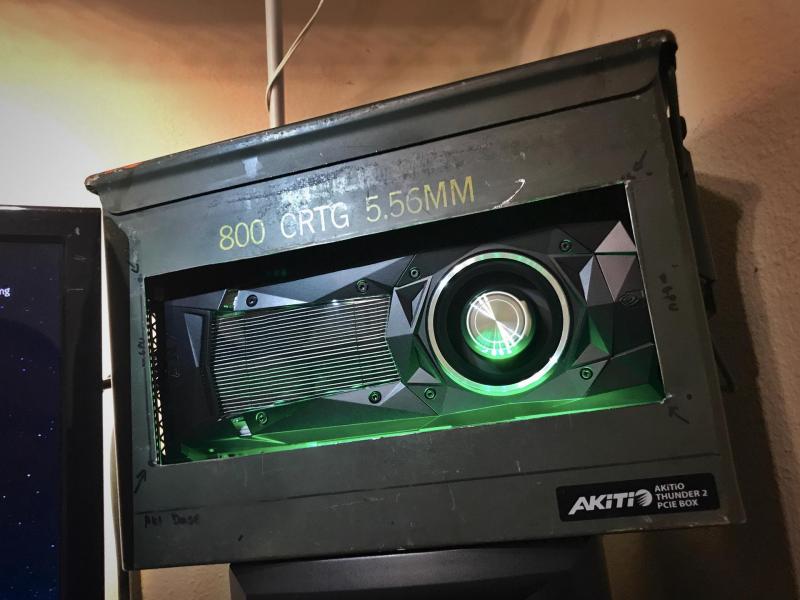Search the Community
Showing results for tags 'mbp'.
-
Hi guys. I have had my egpu setup and running fine for the past year or so on my mbp (mid 2012) which has a hdd drive. I now want to improve the gaming performance, so I've bought an ssd. I manage to get through all the steps in eGPU Setup 1.2 but when i go through the bootloader, it says at the very end "No bootable device -- insert boot disk and press any key". I'm guessing it is to do with my ssd being in the optical drive bay location (i assume this is hd1) and the original hdd (hd0) being disconnected, so windows can't see it when in bootloader. I think I need to edit the config file for the chainloader, so the bootloader reads the ssd but what exactly do i need to change? I tried changing the map section (line 55): map --harddrives=1 if "%DRV%"=="C" map (%FIRSTHDD%) (hd0) Changing the (hd0) to (hd1) put the bootloader in a loop!? So I am not sure what to try next... Any help is greatly appreciated! Thanks
-
Hi, as of Christmas time i tried my setup 550W PC PSU but will switch for this one once finish testing (220W Switching PSU) Barrel plug EVGA GTX 1060 6GB SC card (fits without bending the box), using 3GB OC version as well with no problems 2015 13" Macbook Pro (model MacBookPro12,1) Akitio Thunder 2 box So far using the internal screen (projector Epson EH-TW5100 for testing purposes) Ext. monitor Dell 27" S2716DG Samsung T1 500GB Win10 (v.1511) Installed WIN 10 to USB drive first using https://bleeptobleep.blogspot.cz/2013/02/mac-install-windows-7-or-8-on-external.html Had a problem to update to newest version of WIN10 over the windows update(some uEFI hw issues), but it went smoothly once i run this WIN 10 disk as a virtual over VirtualBoxVM http://www.sysprobs.com/mac-os-x-host-boot-virtual-machine-from-usb-in-virtualbox For powering the box i just removed one connector from PSU(pics bellow) and used RED-yellow/Black cable without soldering to connect the barrel plug For the GPU i used the 6pin connector from PSU To install: - Power on the Box - Boot to WIN 10 - Hot plug the Thundebolt cable and check the Device manager for new card something like "Basic Display Adapter" - Then install the Geforce driver (in my case the version 376.33) as administrator. Even 378.49 works fine - Then follow the instruction and reboot (don't unplug the cables). Rebooting without ext.monitor plugged in. - It should boot again in WIN10 (select win 10 during the boot). It requires a bit patience here during spinning wheel. I made a ham&eggs meanwhile (approx. 10-15minutes). I don't have to select the system after chime because my system starts automaticly when USB with Win10 is plugged in EGPU is working until the next reboot of Win10 in that case i need to reinstall the drivers (but it's worth those 8 minutes ) - Remove the old drivers by DDU tool (Display driver uninstaller) http://www.guru3d.com/files-details/display-driver-uninstaller-download.html - Install the driver again as described above and it should work again Remarks: I was running fine even on build 1607 of Win10 but after some microsoft update it stopped working. So i reverted back to build 1511 again (see below what i have installed from Microsoft) I found out that i don't really need to reinstall the drivers again. Just doing this: - turn off the Mac, - plug in the th2 - then turn the Mac on and just after chime turn on the egpu (It will not boot with the win for first time, but the win it self boots) - Then i just restart the win and not touching the th2 cable. And that's it. eGPU is up and running. (there is spinning wheel but all it takes is 2-3minutes) PPS: Don't let the windows to go to screensaver or powersaver mode. It will disconnect the eGPU Work in progress Its a snug fit This cable i used to power box (yellow and black wire) Work in progress
-
Hi all, I have my egpu working consistently in the last couple days. I want to share my experience to you guys. I hope my experience would help you to solve your problem. First of all, I find out Windows 8.1 perform more consistently than Windows 10. I think Windows 8.1 could solve many issues such as black screen and infinity wheel spin. This thread inspired me to set up my hardware. According to my experience, Windows 8.1 would be work either Win to Go(Exteral Hard Drive) or Bootcamp (Internal SSD). Hardware: AKiTiO Thunder2 PCIe Box EVGA GTX 1060 OC single fan ITX Power Supply 600w Process: Step 1 : Run Windows 8.1 and install Bootcamp Step 2 : Power up Egpu and hot plug thunderbolt cable to Macbook Step 3 : Let windows detect the egpu plug in (check device manager) (for more detail check the thread above) Step 4 : Install the Nvidia graph card drive, but do not click "Restart". I prefer to "Shut down" manually. Step 5 : Keep TB caple plug in and power up macbook. Also plug in external display to the Egpu Step 6 : It should be work! Notice: After you install the graphic card drive, you need to shut down the Macbook correctly at least 1 times before you plug in the Egpu. For example, Your got black screen/wheel spin. Then you need to unplug the TB cable, and then let macbook loggin to MacOs/Win 8.1 and press the shutdown button. After Macbookturn off, plug in and load to windows 8.1. Hopefully those process would work for your Macbook. Good Luck.
-
This isn't even my final form! "DotPusher III" Hardware: Mid-2014 MacBook Pro (15-inch) Core i7-4980HQ (2.8 GHz) NVIDIA GT 750m NVIDIA TITAN Xp 12GB (GP102-450) (previously 980, 980 Ti) Also tested with: EVGA GTX 1080 SC (see bottom of post) Akitio Thunder2 Corsair 550w ATX PSU "Fat .50" Ammo Can (800 rd 5.56mm) Software: Windows 10 Latest macOS version automate-eGPU.sh rEFInd Boot Manager apple_set_os EFI application Tools: Screwdrivers Channel-lock Pliers (or vise grips) Jigsaw / Dremel / Angle Grinder / Metal File / Sandpaper The Build Honestly, the build was surprisingly simple! Popped open the Akitio, used channel-lock pliers to pry the front side of the Akitio open to allow for the length of the GPU. Added gaff tape over all of the metal parts, just in case the card came into contact with the bare metal of the bent Akitio enclosure. Got the card handy, a gorgeous little reference model GeForce GTX 980. On a side note, I actually had an MSI GTX 980 GAMING 4G but ended up trading it for this reference unit, as it was one of the ugliest pieces of hardware I've ever seen, and the reference models are just beautiful. (Form over function, but isn't that the Apple way? :P) The card slotted right in, no problems here. Next up was the power supply. I used a Corsair 550w unit, but cut everything besides the two PCIe power connectors and the CPU 12v rail (to power the Akitio). Terminated all the ends with shrink wrap and gaff tape on top of that, and taped all the unused lines down to the side of the PSU. It was also during this step where I hotwired the PSU to always be "on" via the paperclip trick...except I just traced those wires back to where I was going to make my cut, and soldered them together. For the Akitio's power, I used the molex-to-barrel-adapter guide, but instead of being patient and getting a proper barrel connector with two leads, I cut the barrel connector off of the Akitio's power supply that came in the box. I like to live life in the moment, I guess...but the fruits of my labor were revealed when I stripped the wire and it turned out to be coaxial instead of side-by-side! No matter, I said to myself, as I twisted the outer fibers into a solderable piece of wire, and stripped the inner wire as well. Verified polarity via a multimeter, and soldered the Akitio barrel connector to the CPU12v line from the PSU. A bit of shrink-wrap and gaff tape later, and I had a nice little feed for the Akitio coming off of the PSU. No powered riser bs, no extra Akitio power supply. Clean and simple. PCIe plugs went straight into the GPU, I gave em a little bend so they'd hug the edge of the magazine holder. I also re-routed the front LED from the Akitio's box around the back of the PCB to where the Akitio power plug is, so that that area of the magazine holder lights up blue when the card is active. At this point, I took the magazine holder and made cutouts for the GPU ports, ventilation, and PSU ventilation. Covered the rough edges with gaff tape so they wouldn't fray and get sucked into a fan (plus it looks a bit less janky). The Akitio with GPU slid perfectly into one side of the magazine holder (make your measurements first before going shopping!), but was sitting too low for my cutout to be centered on the GPU's cooler...nothing a little packing foam (from the Akitio box!) couldn't fix. The PSU slid in with...some effort. From my measurements, I knew the PSU wasn't necessarily going to fit, but it was close enough that with a bunch of gaff tape to keep the bottom and sides secure, it doesn't move anywhere and there are no signs of any danger of it falling out after a good 2 weeks with the setup. I just try to keep this side hidden, it's pretty garish. EDIT 070416 (MURICA DAY) Added green underlighting because #AMDsux #teamNVIDIA (lol). Here she is at work (literally, at my work), powering 2x 120 Hz displays & a bunch of OpenCL compute. The Experience It was time to start her up. Plugged in PSU, switched it on, plugged my 4K 60Hz monitor into the eGPU, plugged the TB cable into the Mac and hit the power button. Fired right up, booted into Windows and re-installed the NVIDIA drivers. After a reboot, the card was recognized, and I was playing Doom (2016) at ultra quality 1440p inside of 10 minutes. Not too shabby! I spent some time in MSI Afterburner, customizing a fan curve to keep it pretty quiet during moderately high gaming workloads, but ramp the fans up quickly if the temperature went north of 70º C. Boy, this thing is loud when the fans are at full tilt, but I'm glad they; the reference cooler is no slouch, and with fans cranked to max it's actually able to pull down the temperature from 80 down to 70 while furmarking! With a bit of tinkering, I settled on a final, furmark-for-8-hours-stable overclock of +225 MHz core, and 7400 MHz on the memory. Using ThrottleStop, I also undervolted the i7 in the laptop, and downclocked it to ~2.4 GHz. Windows runs a bit hotter than OS X, figured I'd help out as much as I could. I gotta say, it feels good to put down an 80th-percentile score in 3Dmark Fire Strike with a MacBook Pro. On the OS X side of things, automate-eGPU.sh took care of everything without a hitch. I did notice some weird stuttering every second (and exactly on every second), but with some tinkering I found out that the "Displays have separate spaces" option was the cause of the issue. Disabling it made OS X run perfectly smoothly afterwards. Final Cut Pro X immediately took advantage of the new GPU, and I was able to play back Sony FS5/A7s 4K footage with a few layers of colorgrading on it much smoother than with the 750m. It can almost handle playing it back at full-res, which was just astonishing to me. Analyzation of footage for stabilization just rips, along with optical flow retiming. Adobe CC was able to take advantage of the card as well, Mercury Playback Engine (CUDA) felt much smoother than on the 750m, though I haven't been using Premiere in a while so I didn't do much testing in CC. Unfortunately, After Effects is not really accelerated by the card, but oh well. To get Optimus to work with a 750m-equipped MacBook Pro, I turned to this reddit thread detailing the installation of rEFInd and using an EFI utility called apple_set_os to get the Mac to expose the Iris Pro when booted into Windows. I also customized the rEFInd interface because the default skin looked like something out of Mac OS 7.5.3 (I half expected little puzzle piece extension icons to start loading across the bottom). The reasoning for using apple_set_os instead of the built-in spoofing feature in rEFInd is because I'd like to normally run Windows without the iGPU enabled, but retain the ability to switch into "Optimus mode" when I'm mobile. My full boot/setup process for mobile gaming via Optimus, coming from normal eGPU usage with external monitor is as follows: Leave eGPU unplugged Boot into Windows Disable the 750m in Device Manager (I usually leave it enabled when booting Windows normally) Run the switch-GPU script to set the iGPU as primary Shut down Windows Plug in eGPU and start the computer Select apple_set_os (I've renamed this to "iGPU Enabler", the far right icon in rEFInd) Boot Windows If all goes well, I'm in Windows with the GTX 980 as the Optimus "high-performance NVIDIA processor". Game performance takes a bit of a hit, but not anything significant...I can still play most titles at 1080p ultra quality, and they look great on the MacBook Pro's retina IPS display. Lingering Issues Thankfully, all of the lingering issues I have only involve the boot process. Sometimes the entire system refuses to POST (sits at a black screen without ever chiming), and I have to hold the power button for a few seconds and try again. When it does POST though, the next hurdle is whether the driver (in OS X or Windows) will initialize properly. Sometimes it doesn't want to play nice, and I'll get a BSOD on booting Windows with DRIVER_IRQL_LESS_OR_NOT_EQUAL, but a restart or two will do the trick. FIX FOR BSOD ON BOOT: I figured it out, a trip to Device Manager and I noticed there was a "show hidden items" menu option. Clicking that revealed that I had two GTX 980 devices that weren't connected for some reason, and the driver was fighting itself upon initialization during boot. Rebooted into Safe Mode and ran DDU to clean out the NVIDIA driver, reinstalled it in normal mode with the eGPU connected, and all is well. One GT 750m, and one GTX 980 in Device Manager when viewing hidden devices. If you're having driver issues like I did, you might want to check this. (NEW) FIX FOR macOS NOT BOOTING: Run Goalque's script in "-a mode". This alters something regarding the thunderbolt chipset on every shutdown, so when rebooting back into macOS, the eGPU will initialize properly every time. For OS X, I just get a black screen with my monitor showing no signal input. Again, a restart or two fixes this. (Honestly, I've had the NVIDIA Web Driver do this with the internal 750m, so it's just a normal driver-crashing-on-init issue, not specific to the eGPU.) But once the system is booted, it is rock solid, and I've never had anything crash or fail (besides overclock-induced crashing in Windows, but that's my own fault). It all seems to be based on luck of the draw, as I'll have some days where it'll work flawlessly and I'll be bouncing between the two OS's with no problem, other days I'll get 8 failed starts in a row. If anyone has any idea how to help mitigate these failed starts, I'm all ears. The only other issue I can think of is lack of display brightness control when running in Optimus mode (anyone got any clues?), but it just means I have to set the brightness from within OS X first before going through the boot process. Final Thoughts It was totally worth it. I'm in love with this setup, it truly feels like the best of both worlds. The i7-4980HQ in the MBP is no slouch of a CPU, the only thing my setup was missing was some graphics horsepower, and the GTX 980 more than comfortably steps up to the plate. My work experience has had amazing fluidity, and gaming has gone from sub-720p resolutions on the latest titles to gorgeous looking, maxed quality 1080p and higher. Less demanding titles (CSGO, Borderlands Pre-Sequel) even run at 4K 60fps, which is a sight to behold. The Oculus Rift that I got my hands on runs perfectly smooth, with no VR-sickness to speak of. And all this, in a "portable" setup. I now have 3 levels of portability (with associated levels of performance): full desktop mode, Optimus (so I don't have to lug a monitor around to LAN parties or remote editing / rendering of CGI), and of course the laptop by itself (which, with its Core i7, is still no slouch, at least when it comes to CPU compute power). It's also extended the longevity of my machine a lot, since I was looking at the 2015 and purported 2016 models for their GPU upgrades...but not anymore! The only thing I'm looking at is the moment NVIDIA releases Pascal drivers for OS X...and my poor wallet might have to take the brunt of a GTX 1080. The Future I'm still on the hunt for a better case, but all of the computer cases I've found are...well, computer cases, and far larger than this magazine file setup. So I'm looking at...different solutions. An old army surplus ammo box looks like my next case, and it has a handle at the top, which I can't live without after having this magazine file for a couple weeks. I'd love to pick up a modular SFX PSU so that the PSU actually fits into the magazine holder without any modification necessary, and if it's modular, it'll help keep the cables clean and tidy, with no drive and fan power cables to cut. Hope you guys enjoyed the adventure, and that some of the solutions to the little quirks I found help out someone! Happy eGPU-ing! --- EDIT 070416 (MURICA DAY) Just for kicks, slapped a buddy's GTX 1080 into the chassis to test with Windows. It required a driver reinstall as the system didn't detect the 1080, even after rebooting...it seems that the NVIDIA driver enumerates the cards in your system at install time and will only install the drivers it needs to, not all of them (different from the way OS X does it). The driver install worked fine without having to run DDU and cleanly install. YMMV though. The added compute power of the GTX 1080 was more than welcome to help mitigate the performance hit you take when using Optimus. Crysis 3 ran at the laptop's native resolution (2880x1800) at around 45-60fps with all settings cranked. Beautiful. I was really looking forward to testing out Rise of the Tomb Raider on it, but ironically there's a bug with Pascal cards and NVIDIA VXAO, so I couldn't get a fair comparison. Wish I could keep it, but the lack of Pascal drivers for OS X keeps me on the 980. For now. EDIT 071816 Acquired a "Fat .50" (actually an 800x 5.56mm) ammo box and made the primary cuts using a pneumatic angle grinder + cutoff wheel. Test fitted the Akitio and PSU. Currently need to drill the PSU & AKT mounting holes, but also trying to figure out what thread pitch the Akitio's mount holes are (anyone got a clue?). Specifically, the ones that the Akitio's own case's captive thumbscrews screw into. EDIT 072016 Finally finished the ammo can case after much measuring, cutting, and drilling. As the barrel plug was going to be flush against the side of the case, and I didn't want to have to loopback the cable like I did in the magazine file, I ended up soldering the CPU12v rail to the back of the Akitio's PCB. Pre-tinned the wires and plopped them onto the PCB, then secured it with gaffer's. Verified the correct solder points thanks to /u/Dippyskoodlez, who found the info from these very forums. Singed the PCB a bit, but oh well, close enough. EDIT 050517 NVIDIA released Pascal drivers for macOS. Upgraded eGPU to a TITAN Xp. Benchmarks available upon request. Yes, it's completely a ridiculous setup now—I was only able to upgrade due to external circumstances. Diminishing returns starts to creep in (even for the much-more-fairly priced 1080 Ti) due to the TB2 bottleneck.
-
Hi all. I have a rMBP 13" 2015 (force touch model), with the following specs: CPU: 2.7GHz Dual Core i5-5257U (specs here: http://ark.intel.com/products/84985/Intel-Core-i5-5257U-Processor-3M-Cache-up-to-3_10-GHz) 8GB DDR3 RAM (on hindsight, should've upgraded to 16, but damn it soldered RAM, I'm stuck with this now. About to give it the eGPU treatment with a GTX1060 6GB (zotac mini, no OC) with the akitio. All components have already been bought, awaiting setup in my free time. I have seen people talking of CPU bottlenecks. My question is, to what extent will my MBP's CPU and RAM bottleneck my gameplay? And does this bottleneck restrict actual frame rates in games, or is it only prevalent in some other types of computing or rendering which is more CPU-dependent? Maybe only in terms of longer loading times–e.g. maps in CS:GO? (which I'm alright with anyways). Correct me if I'm wrong but I had the impression that games and graphics are little affected by the CPU. Thanks! Looking forward to any insights from the more experienced people in here
- 3 replies
-
- bottleneck
- 2015
-
(and 2 more)
Tagged with:
-
Hi everyone! As described in the title I have a 1) MBP (mid-2012) connected to an 2) Akitio Thunder2 which holds a 3) GTX 750 TI SC. Further specs are: HARDWARE 4) Original Apple TB-Cable 5) new PSUs 5.a) 120 WATT 5.b) 150WATTS 6) various LCD-Displays 6.a) 1280x1024 6.b) 1920x1080 6.c) 1600x1200 6.d) three 1600x1200 at the same time SOFTWARE 7) latest NVIDIA-Driver (346.03.15f02) 8) automate-eGPU.sh v0.9.8 9) MAC OS X, El Capitan 10.11.6 FURTHER INFO 1) I have the MBP in clamshell mode 2) so external monitor(s) is/are the main screen… not the MBP 3) startup is running without any problems THE ISSUE 1) MBP crashes 2) at random events 3) even at low performance... browsing in chrome or anything else normal 4) yes gaming works but also crashes… which is not surprising because 3) 5) all of the configurations mentioned above are not stable 6) even with a small monitor and the 150 WATT PSU 7) Also no difference with three 1600x1200 displays and a 120 WATT or 150 WATT PSU. Also unstable. MY QUESTION(S) 1) So what am I missing here? 2) Any pointers? Many thanks in advance! Bazzinga
-
HI, I'm trying to get my egpu going on windows (for the time being I don't care about OS X), and I can't barely get started. Akitio + Evga 1070 I read many guides but I still don't get it. Right off the bat the Thunderbolt or Basic Display Adaptor doesn't even show up on Windows Device Manager. I think I read somewhere that Windows needs to boot with the Intel graphics not the AMD and in order for that to happen I need to mess with the EFI to make sure the Windows boots with the Intel and not AMD? If that is the case, i couldn't find any instructions on how to do that properly. I really appreciate any input or help! Thanks
-
I have two 2015 Macbook Pros for which I am considering building eGPUs. I had an interesting idea, though - could I use 1 PSU, 1 Cougar Case QBX, and put two graphics cards inside, then hook both Macbook Pros up through it, to external displays? I'd also like to put 2 SSDs in the case and boot through them, if possible. Cheers, and thank you in advance!
-
Hello tech inferno! This is my first post here. This seems the place to be for info on setting up eGPUs. I've done some research, and I'm pretty sure I'm willing to take the plunge down the eGPU rabbit hole. Here's my idea: Since I love the idea of having all my stuff on one sleek, organized computer, I would like to have a 15 inch macbook pro (2015) with an external 'docking station' of sorts that houses hard-drives, a disk drive, and extra ports (usb, ethernet, ect.), and of course, a powerful gpu. I would have two thunderbolt cables: one for the graphics and one for everything else. I would like the external docking station to be housed entirely within a cooler master elite 120 white that I have laying around. The thing is really good looking and seems to be the perfect size. I have attached some pictures of the case for reference. I would like to put the power supply, the graphics card, the hard drives, and the disk drives in their natural places in the case, and I would also really, really like the egpu to work in both windows and mac. It would be cool to have the ports on the case work, but this is in no way necessary. Questions: Will this work? What is possible and what is not? Will the macbook retina with the AMD Radeon R9 M370X be ok for egpu, or should I stick with the iris-only? Any help would be appriciated, as I am eager to learn, but a total noob on egpus. thanks so much, Hunter
-
I'm not sure if I am posting this in the wrong forum or maybe this is a combination of two forum topics (eGPUs and displays) but here it goes: Basically I wanted a external monitor to run on my 15'' mid 2014 macbook pro (no integrated graphics, only iris pro 5200) because I am in the works of making an eGPU for it. I decided to go with the Benq XL2411Z because it seemed like a well rounded monitor and it had a 144hz refresh rate. Now that I've started using it, I have been unsuccessful in achieving anything higher than 60hz. I've been told that if you are running OSX that it is impossible because that is a limit set by apple; however, I have seen people say that they are able to get the 144hz on Windows. So far I have had no such success. I had a HDMI cable connected, then read that in some cases HDMI will not be able to achieve 144hz. So I tried a DVI cable via the mini display-port to DVI adapter, but that did not solve the problem either. A lot of people on other forums have mentioned that they are able to fix this by simply opening their Nvidia control center; however, because I don't have dedicated graphics, all I have is the 'intel integrated control center' which isn't very helpful. The graphics card I am planning on attaching is the evga gtx 960 so I will have to download the drivers for that later (once I get all my parts) but I was wondering if I am missing something here? tl;dr: 1) Do I need a DVI cable to get 144hz or can I achieve 144hz through HDMI? 2) Is it possible to get 144hz without having nivida control center? Thanks!



